Clayton Wright, who built the pedal-and-propeller powered skiff featured as our Reader Built Boat in this issue, put an extraordinary effort into inventing a drive system for the boat only to discover during sea trials that it fell far short of his expectations. “The boat is back in the basement,” he wrote, “I’m going to throw a sheet over her and try to put her out of my mind.”
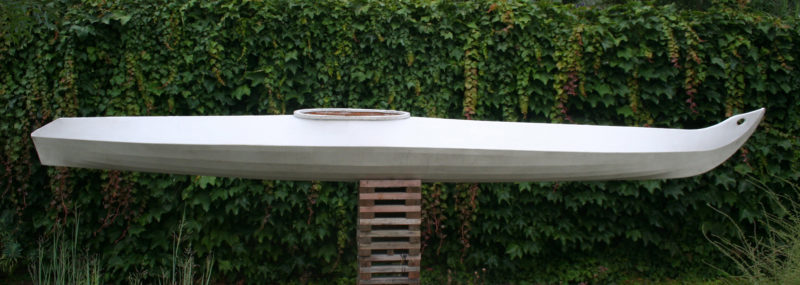
The original King Island kayaks were covered in seal or walrus skins. I used #10 duck and painted it with airplane dope.
Most of us who have built boats choose a design and a means of propulsion for it that have been well tested; the pride we take in the project isn’t dashed on launch day. It’s a rare occurrence to build a boat that is deeply disappointing, but it has happened to me too.
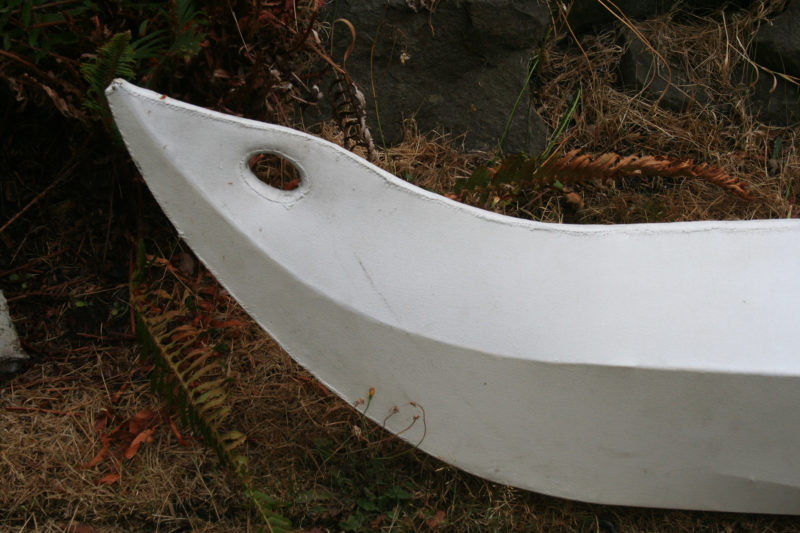
The hole in the upper bow is typical of King Island kayaks and gives the kayak an eye to see with and place to get a solid grip on the kayak.
The third kayak I built was a replica of a type built on Alaska’s King Island. A couple of years earlier, in 1979, I had built a Hooper Bay kayak and had developed an appreciation for traditional construction, and the King Island seemed like a worthwhile project. I don’t recall now what plans I used, but there were drawings and scantlings in Bark Canoes and Skin Boats of North America and I could study the specimen that the Washington State Historical Society had in its museum in Tacoma.
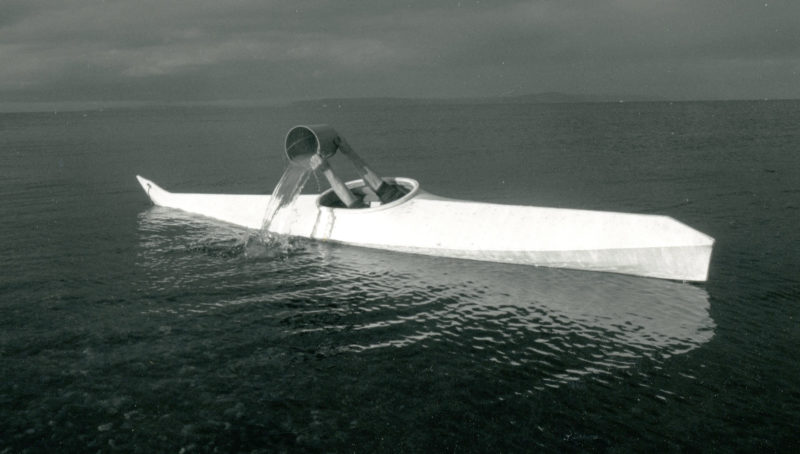
One of the few times my King Island kayak was afloat was for this gag photo I took to illustrate an article on bailing. My dad crawled in and I handed him a bucket full of water. I shoved the kayak out—with a line attached to the bow—and told Dad when to pour the water out.
King Island is situated 40 miles from the Alaskan mainland just south of the entrance to the Bering Strait. The waters there are notoriously rough, and the kayakers needed to travel long distances and carry heavy loads home after a successful hunt. Their kayaks have been described in glowing terms: “Of all the Bering Sea kayaks, this type was reportedly the best made and strongest…a great kayak for a person intent on distance paddling.” It seemed like the perfect choice to fulfill my dream of cruising among the San Juan Islands.
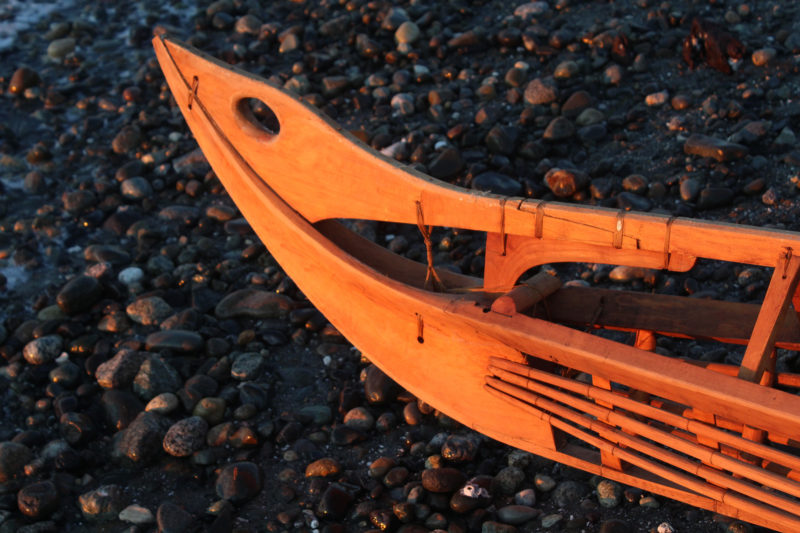
I carved the lower bow piece from an Alaska yellow cedar crook, the grain follows the curves extending upward from the keel and gunwales. Between those edges, the surfaces are hollowed out to reduce weight and provide airspace to keep the skin from rotting.
I wanted my King Island to be as close to the original as I could make it, so all the wood that went into it was driftwood that I gathered from the beaches near home. I split spruce for the gunwales and keel and Western red cedar for the stringers, cut the deck beams and carved the bow piece from Alaska yellow cedar crooks. I used power tools as little as possible and trimmed the pieces to shape with a drawknife, planes, and spokeshaves.

I added a maststep and partner and got so far as making the mast and yards for a small squaresail. I never sewed up the sail.
I made a few additions that I thought would be useful for cruising including accommodations for a foot-controlled rudder, a maststep and partner, and a mast and yards for a small squaresail. I couldn’t use seal skin to cover the kayak, so I used #10 duck and sealed the fabric with airplane dope. I’d already carved a single-bladed paddle for the Hooper Bay, so I was ready to launch.
Getting aboard at the beach was awkward, and when I shoved off I knew something was wrong. The King Island was very unstable. It would roll to one side, I’d brace, and it would roll to the other. The dreams I had for the kayak quickly evaporated.
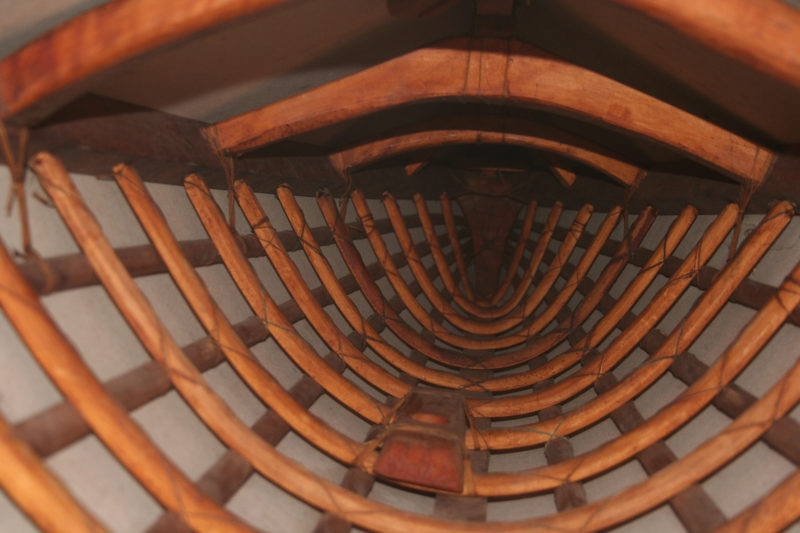
The arched deckbeams were cut from crooks with gentle curves. The ribs were steam-bent from straight-grained yellow cedar.
Unlike the Hooper Bay kayak, which had ribs that were flat across the bottom, the King Island’s ribs were curved and the round bottom wouldn’t provide any stability until the hull had more than my weight aboard to settle deeper in the water and immerse the flare of its sides. With a cruising load the King Island might have offered the stability I needed, but I didn’t want to weigh it down every time I went paddling. I later read somewhere that the King Islanders put beach-stone ballast in their kayaks; I didn’t like the idea of filling a canvas-skinned kayak with rocks.
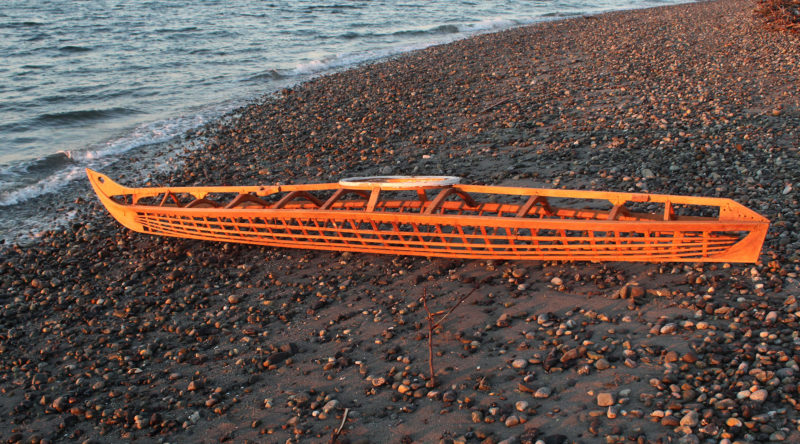
The framework of the King Island kayak is wonderfully complex and unfortunately gets concealed by the skin that turns it into a boat. With the skin removed, it’s sculpture.
My King Island kayak went into storage for decades at home under the eaves or a tarp. The skin eventually rotted and two years ago I tore it off and put it in the trash. I hadn’t had a good look at the frame in decades and I was pleased by what I saw, especially the beautifully curved yellow cedar bow piece. In every facet left by the spokeshave on the ribs and deckbeams I could see my 30-year-old self at work. It reminded me of the aspirations I had then while building the boat, not of the disappointment I felt after launching it.
Whether or not Clay gets satisfying performance out of his pedal-powered skiff, he may, in time, come to see and enjoy the beauty and ingenuity of the boat he built. Things may not always turn out as we intend, but doing good work is always its own reward.![]()

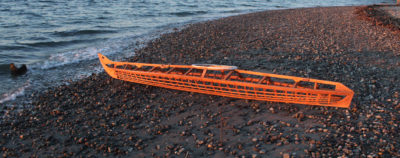
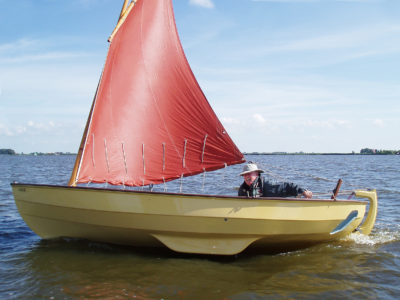
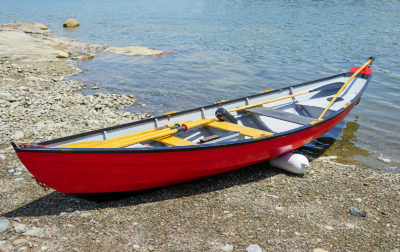
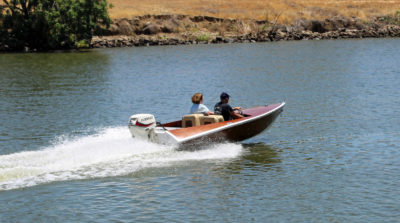

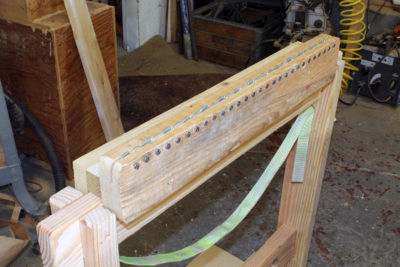
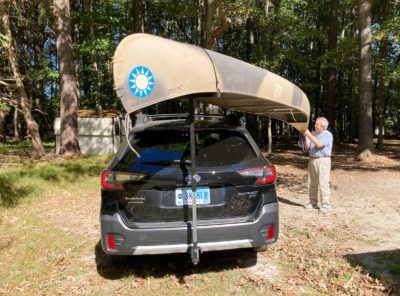
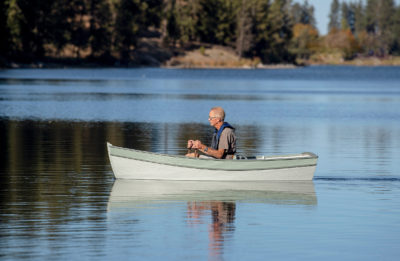
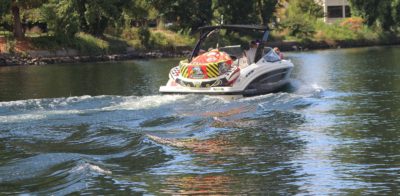
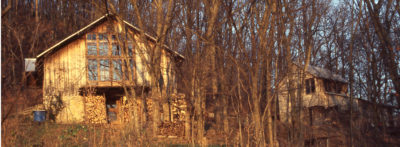
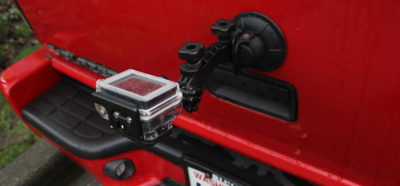
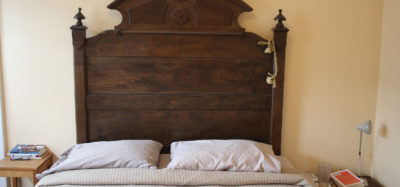
Maybe this kayak was meant to have loads of stuff to carry. I know of whole families to be transported inside kayaks.
Also, Vikings took beach stones as ballast in their boats, to get rid of when there was enough cargo.
In the 1922 file, Nanook of the North, Nanook paddles ashore (5 minutes into the video) with a son, who is perhaps 4 years old, on deck. Nanook gets out of his kayak, puts his son ashore and then helps the rest of his family crawl out of the cockpit: his wife, an infant, an adolescent daughter, and a puppy. The Hooper Bay could carry a similar load, but it would be a tight squeeze in the King Island, though it could carry a good deal of cargo. I don’t recall where I read about ballast for the King Island kayak, but the sones carried for ballast were to be returned to the beach where they were collected, so the ballast was carried to and from the hunting grounds.
As I’ve said before, water ballast might be a good solution. Carry it in gallon or larger containers. Has the advantage of neutral buoyancy in case of swamping.
Cover it in clear mylar, heat shrunk to the frame (beautiful framework) and put some outriggers and a sail on it. It won’t be authentic but maybe useful now.
One thing that I notice about your King Island kayak is that the keel seems to be very straight with no rocker, not the sort of shape usually used for rough water. A friend built a kit kayak without referring to the plans and the result was, like yours, inadequate stability. In his case he had ignored the designed-in rocker and just stitched the hull planking together, letting the plywood shapes push the final alignment without using molds or a strong-back to assure correct alignment. This resulted in a very large amount of displacement distributed on the centerline at the ends of the boat which had two effects. First there was so much support on the centerline that the flare in the bottom was ineffective in providing stability until the angle of heel was extreme. Second, the seat that sloped fore and aft but averaged 1 1/2″ above the keel was about 3 1/2″ above it’s intended height. That kayak is still hanging up-side-down in his hangar 25 years later being a very nice decoration. I wonder if the artifact example that your drawings were taken from might have suffered in storage in such a way that reduced some of the shape built in by the builder or that the draftsman perhaps felt that storage had altered the shape and that the keel should be straight. Wild supposition, but it’s fun to think these thing through. Lauren Williams
It is fun to think about designs and how they perform. Some rocker in the keel can contribute to stability but the straight keel was a common feature on both the King Island and Hooper Bay types. The Hooper Bay documented by David Zimmerly was built by Yupik kayak builder Dick Bunyan (1907-1996) so its shape wasn’t altered by storage.
Seat height can have a dramatic effect on stability. In both the Hooper Bay and the King Island, I just used a thin foam pad for a seat.
Art!
I think your boat is a beautiful sculpture. I would use it in living room if I had space!
The outrigger idea of one reader is a good one too. In ’70s, a friend Steve and I put together a outrigger/proa with an old frame from a 15′ or 16′ kayak recovered in canvas, 2″x4″ akas and a seat just to ama side, a ply windward board, that you could adjust position, and a cardboard ama. Shunt to tack. The”Junker.”
Sailed very well! Competitive with a 30′ tri.